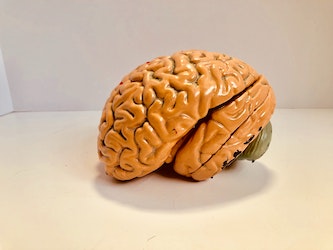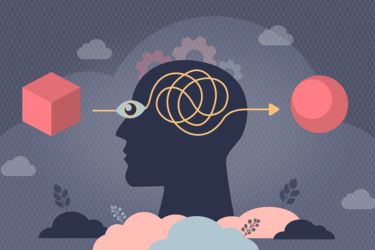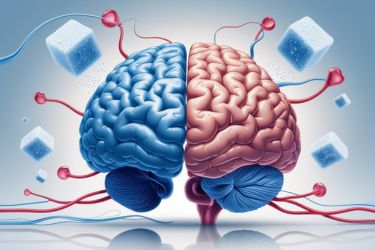The vagus nerve is one of the most important nerves in our body, connecting the brain to many of our major organs like the heart, lungs, and gut. It helps control vital functions such as breathing, heart rate, and digestion without us having to think about them. Because the vagus nerve influences so many parts of our body, scientists and doctors are fascinated by how it affects our health and well-being.

As we learn more about the vagus nerve, we discover its crucial role in how our body and brain communicate. Problems with this nerve can affect how we feel both physically and mentally. Understanding how it works and what happens when it doesn’t is important for anyone interested in improving their health.
Key Takeaways
- The vagus nerve links the brain to major organs and helps manage vital functions.
- Its health can affect how we feel physically and mentally.
- Simple lifestyle habits can support better vagus nerve function.
Anatomy of the Vagus Nerve

The vagus nerve, also known as cranial nerve X, is the longest cranial nerve in the body. It connects the brainstem to major organs in the neck, chest, and abdomen, providing critical sensory and motor functions.
Origin and Pathways
The vagus nerve begins in the medulla oblongata, which is a part of the brainstem. From here, it exits the skull through the jugular foramen, travelling down the neck within the carotid sheath.
As it descends, the nerve runs between the internal jugular vein and the carotid artery. It continues into the chest, where it moves behind the heart and lungs. In the abdomen, it supplies the digestive organs, including the stomach and intestines.
This pathway allows the vagus nerve to reach numerous organs, making it essential for controlling both voluntary and involuntary processes. Its long course is what gives it influence over so many body systems.
Major Branches and Innervation
The vagus nerve gives off several important branches along its route. The most notable include the pharyngeal branch, the superior laryngeal nerve, and the recurrent laryngeal nerve.
- Pharyngeal Branch: Innervates muscles of the pharynx, helping with swallowing.
- Superior Laryngeal Nerve: Controls part of the larynx, especially for voice.
- Recurrent Laryngeal Nerve: Wraps around major arteries and innervates most of the muscles in the larynx.
The vagus nerve also sends smaller branches to the heart, lungs, and digestive tract, where it helps manage functions like heart rate, breathing, and movement of food.
Sensory and Motor Fibres
The vagus nerve contains both sensory and motor fibres, making it a mixed nerve.
Sensory fibres carry information from organs in the chest and abdomen back to the brainstem. This includes sensations from the throat, larynx, and parts of the digestive tract.
Motor fibres send signals from the brain to muscles in the pharynx, larynx, and soft palate. This controls important actions such as swallowing and speaking. They also influence the muscles of the heart and smooth muscle in the digestive system, helping to regulate heart rate and gut movement.
In summary, the vagus nerve acts as a two-way communication route between the brain and several vital organs, using both sensory and motor pathways to carry out its wide range of functions.
Functions of the Vagus Nerve

The vagus nerve is essential for managing many vital processes in our bodies. It affects involuntary actions such as heart rate, blood pressure, digestion, and breathing by carrying signals between our organs and the brain.
Autonomic Nervous System Regulation
The vagus nerve plays a central role in the autonomic nervous system. It is a key part of the parasympathetic nervous system, which helps us rest, relax, and recover. This system is often called the “rest and digest” response.
We depend on the vagus nerve to slow down our bodies after stress. It lowers heart rate, encourages digestion, and signals other organs to conserve energy. It helps balance the sympathetic nervous system, which controls the “fight or flight” response. By providing a counterbalance, the vagus nerve keeps our internal environment stable.
The vagus nerve also controls certain reflex actions. For example, it helps regulate the gag reflex and the movement of the soft palate. This means it is involved not only with internal organs but also with protective actions in the throat.
Role in the Cardiovascular System
Through the parasympathetic nervous system, the vagus nerve helps control our heart rate and supports a steady rhythm. It sends signals from the brain to the heart to slow the heartbeat when needed, such as during rest or sleep.
This nerve also helps to manage blood pressure. By changing the speed and force of heartbeats, the vagus nerve responds to changes in the body’s activity or stress levels. When the vagus nerve is more active, blood vessels can relax, leading to a drop in blood pressure.
Our bodies use this nerve pathway to adjust heart and blood vessel activity automatically. Disruption in vagus nerve function can lead to a fast heart rate or even serious heart rhythm problems.
Digestive System Control
The vagus nerve is vital for proper digestion. It sends messages that tell the stomach to secrete stomach acid and digestive enzymes, and it helps move food through the digestive tract.
When we eat, the vagus nerve triggers muscle contractions, called peristalsis, that mix and push food along the gut. It also helps control the release of bile from the liver and enzymes from the pancreas. These actions support breaking down food and absorbing nutrients.
If the vagus nerve is damaged, digestion slows down and conditions like gastroparesis can occur, making it hard for the stomach to empty properly. The nerve’s influence covers nearly all stages of digestion, from swallowing to the movement of waste out of the body.
Respiratory System Involvement
The vagus nerve also has important jobs in our respiratory system. It carries sensory information from the lungs and airways to the brain and sends motor signals back to help regulate breathing.
This nerve helps us maintain a steady respiratory rate and adjust our breathing in response to changes, such as physical activity or stress. It can also stimulate coughing when something irritates our airways, protecting us from inhaled threats.
It helps control the muscles that allow the lungs to expand and contract. The vagus nerve’s commands are what ensure our breathing remains steady and flexible as our body’s needs change.
The Vagus Nerve and the Gut-Brain Axis

The vagus nerve is vital for linking the gut and the brain. It allows communication through electrical and chemical signals, affecting mood, digestion, and immune function.
Communication Between the Gut and Brain
The vagus nerve acts as a main messenger between the gut and the brain. Around 80% of its fibres carry information from the gut upwards to the brain, with the rest sending signals from the brain to the gut.
Signals include changes in gut movement, nutrient presence, and even gut bacteria activity. When microbes in our gut produce certain chemicals, the vagus nerve helps carry these signals to the brain. The nerve’s sensors in the gut wall detect hormones and neurotransmitters, such as serotonin, released by gut cells.
This real-time communication lets our brain know what’s happening in the digestive system. It also helps control gut movement, hunger, and feelings of fullness. This connection plays a key role in how our body and mind respond to what we eat and how stressed we feel.
Role in Mood and Emotional Regulation
The vagus nerve has a strong influence on our mood and emotional health. It sends signals about gut conditions to areas of the brain that handle emotion, like the amygdala and prefrontal cortex.
Changes in gut bacteria or inflammation can affect these signals, which may influence mental states. Lower vagus nerve activity has been linked to stress, depression, and anxiety. Some studies show that stimulating the vagus nerve can improve mood and reduce symptoms of depression.
Gut-derived neurotransmitters, such as gamma-aminobutyric acid (GABA) and serotonin, play a part in these effects. The vagus nerve helps transport their signals, affecting emotional reactions and resilience to stress. This means both our gut health and vagus nerve function are important for mental wellbeing.
Influence on Immune Response
The vagus nerve also has a role in controlling inflammation and immune activity. It helps maintain immune balance by releasing acetylcholine, a neurotransmitter that can signal immune cells to reduce inflammation.
When the body senses infection or injury, the vagus nerve can help limit harmful immune responses. It acts as a brake, telling the immune system when to stop releasing inflammatory molecules called cytokines.
This pathway, known as the inflammatory reflex, helps protect us from damage caused by ongoing inflammation. By linking the nervous system and immune response, the vagus nerve is part of how stress and gut health can impact our risk for illnesses related to the immune system.
Vagus Nerve Disorders and Dysfunction

Vagus nerve disorders can disturb many body systems, leading to a wide range of symptoms and overlapping medical conditions. These disorders stem from nerve dysfunction, and the effects can vary, depending on the severity and areas affected.
Signs and Symptoms of Dysfunction
When the vagus nerve does not function properly, we may notice a mix of symptoms. Difficulty swallowing, also known as dysphagia, is a common sign. Some of us might experience heart-related symptoms, such as arrhythmias, which include bradycardia (slow heartbeat), tachycardia (fast heartbeat), and palpitations.
Symptoms can also involve the digestive system. Gastroparesis, where the stomach can't empty food properly, often causes nausea and bloating. Others might have reflux problems like acid reflux or GERD. Fainting episodes, especially vasovagal syncope, can occur if the nerve triggers a sudden drop in heart rate or blood pressure.
Key signs to watch for:
- Trouble swallowing
- Heartbeat irregularities
- Nausea or bloating
- Acid reflux symptoms
- Unexplained fainting spells
Related Medical Conditions
Several medical conditions link to vagus nerve dysfunction. Gastroparesis is particularly notable in people with diabetes, since high blood sugar can damage nerves over time. Obesity can raise the risk, as it puts pressure on the stomach and affects nerve signals.
We also see connections with heart rhythm problems (arrhythmias), and some people may have episodes of fainting caused by vasovagal syncope. Chronic acid reflux and GERD are common when the lower oesophageal sphincter does not close properly, which the vagus nerve helps control.
A table of related conditions:
| Condition | Common Symptoms |
|---|---|
| Gastroparesis | Nausea, vomiting, bloating |
| Arrhythmias | Palpitations, dizziness |
| GERD / Acid Reflux | Heartburn, regurgitation |
| Vasovagal Syncope | Fainting, light-headedness |
| Diabetes | Gastroparesis, neuropathy |
| Obesity | Increased risk of GERD |
Nerve Damage and Its Effects
When the vagus nerve is damaged, the body can lose some ability to regulate important functions. Swallowing may become unsafe, raising the risk for aspiration. Digestion slows, which can lead to gastroparesis. Nerve damage can also affect how well the heart keeps a steady rhythm, resulting in bradycardia, tachycardia, or even fainting.
Prolonged nerve damage increases the risk of chronic problems. We may see regular acid reflux, unwanted weight loss from poor nutrient absorption, and even issues with controlling blood glucose in diabetes. When the vagus nerve cannot carry signals properly, these physical effects often become persistent or worsen over time. Diagnosis often requires a combination of heart monitoring, assessments for swallowing and digestion, and sometimes nerve function tests.
Vagus Nerve Stimulation and Therapy
Vagus nerve stimulation (VNS) is an important treatment that affects how the brain and body work. It is used for certain medical conditions, mostly when other treatments have not worked well.
Vagus Nerve Stimulation Techniques
There are two main ways we can stimulate the vagus nerve: implanted devices and non-invasive methods. The most common is an implanted device often used for people with epilepsy or resistant depression. This small pulse generator is placed under the skin near the chest. It connects to the left vagus nerve in the neck using a thin wire.
The device sends regular, mild electrical signals to the vagus nerve. These signals travel up to the brain to help control abnormal electrical activity, like that seen in seizures. We can also use non-invasive techniques, such as transcutaneous stimulation. This method uses electrodes on the skin, generally on the ear or neck, to send mild pulses and does not need surgery.
Doctors can adjust the settings on VNS devices to change the frequency and strength of the stimulation. This allows us to tailor the therapy to match each person's needs and response.
Therapeutic Applications
The main use of VNS is for drug-resistant epilepsy. When medicines do not control seizures, VNS can lower how often seizures happen. Some people also use VNS for severe depression that has not improved with other treatments.
New research shows that VNS may help in conditions like anxiety, inflammatory diseases, and even as a part of stroke rehabilitation. The vagus nerve is the tenth cranial nerve and plays a key role in the body's involuntary actions, such as heart rate, digestion, and mood. By improving vagal tone (the activity of the vagus nerve), VNS may help control body functions that are out of balance in certain diseases.
We may see future uses grow, but the main reasons we use VNS today are still epilepsy and depression.
Potential Side Effects and Risks
Like all medical treatments, VNS carries possible risks and side effects. Common side effects include hoarseness, a cough, throat pain, or a tingling feeling in the neck. These often happen when the device sends a pulse but can get better with time or by changing settings.
Some people notice changes in their voice, problems swallowing, or shortness of breath. Infection or discomfort can happen where the device is implanted. Rarely, the device or wire may need to be adjusted or removed.
Vagotomy, which is surgical cutting of the vagus nerve, is a different procedure with its own risks and is not the same as VNS. We should always talk to our doctor about possible side effects and whether VNS is suitable for our condition.
Improving Vagal Function and Lifestyle Interventions
Vagal health plays a key role in regulating our stress response, digestion, heart rate, and mood. Specific exercises, mindfulness techniques, and daily routines can help us support and strengthen our vagus nerve.
Exercises for Vagus Nerve Health
Some simple exercises target the vagus nerve directly. Deep breathing, especially diaphragmatic breathing, is among the most effective. We can place a hand on our belly and slowly inhale through the nose until the stomach rises, then exhale gently. This activates the vagus nerve and promotes calm.
The Valsalva manoeuvre is another option. We take a deep breath, hold it, and gently bear down as if having a bowel movement for a few seconds before releasing. This can trigger a vagal response, although it should be done with caution and may not suit everyone.
Gargling with water, humming, or singing loudly also stimulates the vagus nerve. These activities engage the muscles at the back of the throat, which are connected to the nerve itself. Even a brief session of these can be beneficial. We should aim for a short daily practice to help tone the vagus nerve over time.
Mind-Body Approaches
Mind-body techniques like yoga, meditation, and mindfulness can help balance our nervous system. Yoga combines physical postures, stretching, and controlled breathing, all of which naturally activate the vagus nerve. For example, slow-paced yoga routines with deep breathing exercises promote relaxation.
Meditation helps us focus the mind and reduce anxiety. Mindful breathing, in particular, shifts our body into a state of rest. We can sit quietly, focus on our breath, and bring attention to each inhale and exhale. This practice enhances vagal tone by reducing our stress levels and improving emotional control.
Mindfulness is simply being present in each moment. Whether eating, walking, or doing chores, paying full attention to the experience can activate the parasympathetic system via the vagus nerve. Regular practice lowers the effects of stress and supports mental health.
Everyday Practices for Vagal Support
Daily routines make a real difference in vagal health. Regular physical activity such as walking, swimming, or cycling can support our parasympathetic nervous system. We should also prioritise getting enough sleep, as tiredness can weaken vagal function.
A healthy diet rich in fruit, vegetables, and fibre supports good gut health, which is closely linked with the vagus nerve. Staying hydrated is important too, as dehydration can stress our system.
Laughing, socialising, and spending time in nature can naturally boost vagal tone. Even a few minutes of gentle stretching, laughter, or listening to calming music each day may help. Small daily habits, done consistently, offer the best long-term results for vagus nerve health.
Frequently Asked Questions
The vagus nerve affects many body systems, such as our heart, gut, and mental health. We can use various techniques and exercises to support its function and promote well-being.
What are common symptoms associated with disorders of the vagus nerve?
Disorders of the vagus nerve may cause symptoms like trouble swallowing, rapid heartbeats, and digestive issues such as nausea, bloating, or constipation.
Some people may also experience changes in their voice or feelings of faintness.
Problems with the vagus nerve can sometimes lead to poor regulation of blood pressure or even anxiety.
How can vagus nerve stimulation be beneficial?
Vagus nerve stimulation can help regulate our heart rate and improve digestion.
It may also be used as a treatment for people with certain types of depression, especially when other treatments have not worked.
Some studies show stimulation can help reduce inflammation and support overall brain health.
Are there natural methods to facilitate the healing of the vagus nerve?
We can use breathing exercises, meditation, and regular physical activities to promote vagus nerve health naturally.
Good sleep, balanced nutrition, and stress management can also help our vagus nerve function better over time.
Connecting with others and spending time in calm environments may aid recovery and healing as well.
What specific exercises can help in stimulating the vagus nerve?
Deep, slow breathing, especially long exhalations, can help engage the vagus nerve.
Singing, humming, or gargling activates muscles in the throat and stimulates the nerve.
Cold exposure, like rinsing our faces with cold water, has also been shown to stimulate vagal activity.
What roles does the vagus nerve play in the human body?
The vagus nerve controls many automatic body functions, including heart rate, digestion, and immune response.
It helps us calm down after stress by activating the "rest and digest" system.
The vagus nerve also carries messages between the gut and brain, which affects both our mood and physical health.
What are some effective ways to activate the vagus nerve?
We can activate the vagus nerve by practising slow, deep breathing or progressive muscle relaxation.
Other ways include mindful meditation, singing, or practising gratitude.
Even simple acts like laughing or maintaining a regular sleep routine can help stimulate healthy vagal activity.





















